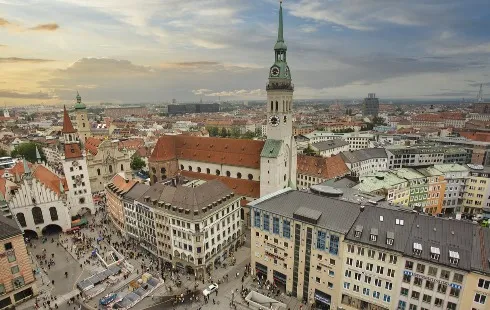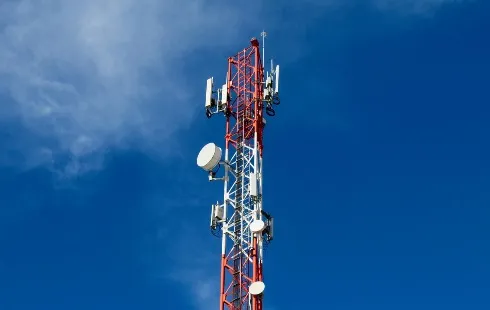
Gonadorelin Peptide: A Gateway to Understanding Endocrine Dynamics
Section: Science
The morning after the storm, on the southern tip of Manhattan, one can begin to doubt whether it was perhaps all just a bad nightmare. The streets are almost dry, only a few fleecy clouds are drifting across the blue sky, the skyscraper facades are glittering. And even the subway is partially running again, taking commuters to their offices, albeit with long delays. During the night, the city had completely suspended subway service.
Mayor Bill de Blasio and also the state's new governor, Kathy Hochul, had declared a state of emergency and urged all New Yorkers to stay home and keep the streets clear so as not to hinder emergency workers in their work. "All non-emergency vehicles must stay off NYC streets and highways," the city tweeted. The heaviest rainfall since records began paralyzed the metropolis of millions for hours.Although weather services had warned about what the northward-moving foothills of Hurricane Ida could do to the East Coast region between the states of Maryland and Connecticut on Wednesday, the scale of the storm's impact was still surprisingly large.
In the New York boroughs of Brooklyn and Queens, which were hardest hit by the gigantic amounts of rain, streets such as Queens Boulevard became rivers, with cars and buses floating uncontrollably through the area.Subway stations filled up, and videos of eyewitnesses showed how floodwaters poured into the 28th Street & 7th Avenue and Franklin Avenue & Fulton Street stations, for example. Power was lost in tens of thousands of homes, and basements were flooded.
At least 41 people died in the storm surges in New York and surrounding areas. Police reported 12 deaths in New York City on Thursday. At least 23 people died in neighboring New Jersey, according to Gov. Phil Murphy. Other people died in the suburb of Westchester and near the metropolis of Philadelphia in the state of Pennsylvania.
When the first alerts flashed on New Yorkers' cell phones around 9 p.m. Wednesday, warning of "life-threatening" spring tides for the first time in the city's history, everything still looked like a severe but not unusual storm.
The rain had started in the early evening and had then gradually become heavier, the gusts of wind increased in force, so that it was not long before the streets of Manhattan emptied.More rain fell in a short time than normally in a month. Within just one hour, around 80 millimeters of rain fell in Central Park in Manhattan, for example, according to the National Weather Service. De Blasio spoke of a "historic weather event."Rescue workers tried to get to people in boats who were holding out on car roofs or on the upper floors of their homes. Hundreds had to be rescued from broken-down trains and subways.
According to the New York Times, the dramatic situation in certain areas of Queens, where several people drowned in their basement apartments, is due to the fact that many basements there have been illegally converted into living space in recent years. But experts also warned that New York was not prepared for the challenges posed by climate change, which makes such extreme weather more likely. The city, they said, is not capable of absorbing such masses of water. Mark Levine, a member of the City Council, tweeted, "We are beyond unprepared for climate change."
The US Open, which had just started, was also affected by the storm. German tennis player Angelique Kerber's second-round match had to be postponed as heavy rain poured into Louis Armstrong Stadium despite a roof from the side.
In New Jersey, a tornado also destroyed several houses. Videos showed covered roofs, destroyed facades and flying debris. Such unusual and dangerous tornadoes for this region were also sighted in Pennsylvania and Maryland.
Flooding also occurred in the Capital Region around Washington DC. In Louisiana, where "Ida" made landfall on Sunday as a second-highest level 4 hurricane, more than a million people are still without power.
U.S. President Joe Biden will travel to the particularly hard-hit state on Friday. The president will take stock of the storm damage and meet representatives of the state and affected communities, the White House said. U.S. President Biden also sees evidence of the climate crisis in the devastating storms, severe weather and wildfires in the United States. The country's infrastructure must be adapted to the threat level, he said. "We must act," Biden said. "My message to everyone affected is, 'We're in this together.' The nation is here to help."
The destruction from "Ida" is expected to reach tens of billions of dollars, experts estimate. CoreLogic, an insurance services provider specializing in risk analysis, estimates total damage from wind, storm surge and flooding to buildings at $27 billion to $40 billion More than 90 percent of the damage occurred in Louisiana, according to the report.
Photo by Wade Austin Ellis

Section: Science

Section: Health

Section: Arts

Section: Health

Section: Science

Section: News

Section: News

Section: Health Insurance

Section: Health

Section: News
Health Insurance in Germany is compulsory and sometimes complicated, not to mention expensive. As an expat, you are required to navigate this landscape within weeks of arriving, so check our FAQ on PKV. For our guide on resources and access to agents who can give you a competitive quote, try our PKV Cost comparison tool.
Germany is famous for its medical expertise and extensive number of hospitals and clinics. See this comprehensive directory of hospitals and clinics across the country, complete with links to their websites, addresses, contact info, and specializations/services.
The granddaughter of Claire Zachanassian makes a return to Güllen, the impoverished hometown of her late grandmother, for a performance. Having never fully engaged with her grandmother's past, she is eager to finally discover Güllen. The sound of her last name stirs the entire town into action.



No comments yet. Be the first to comment!